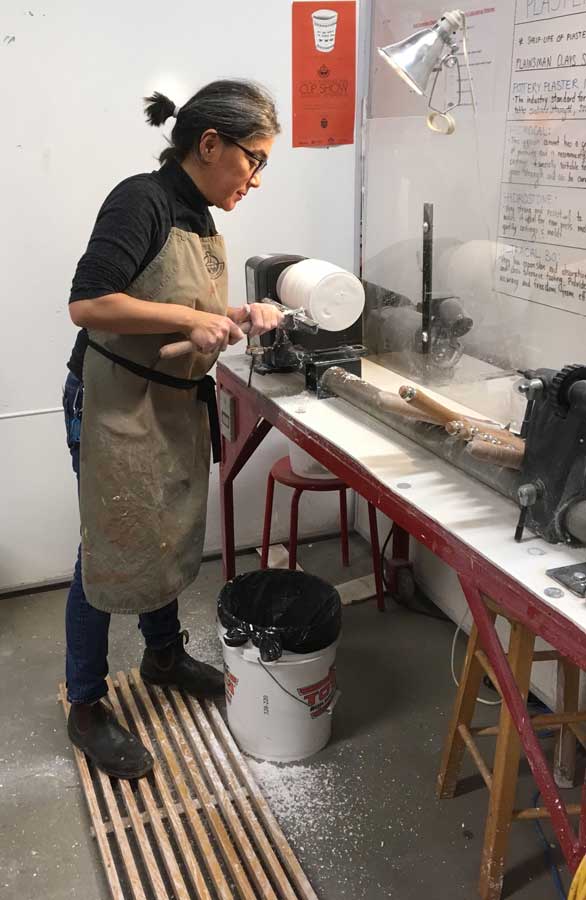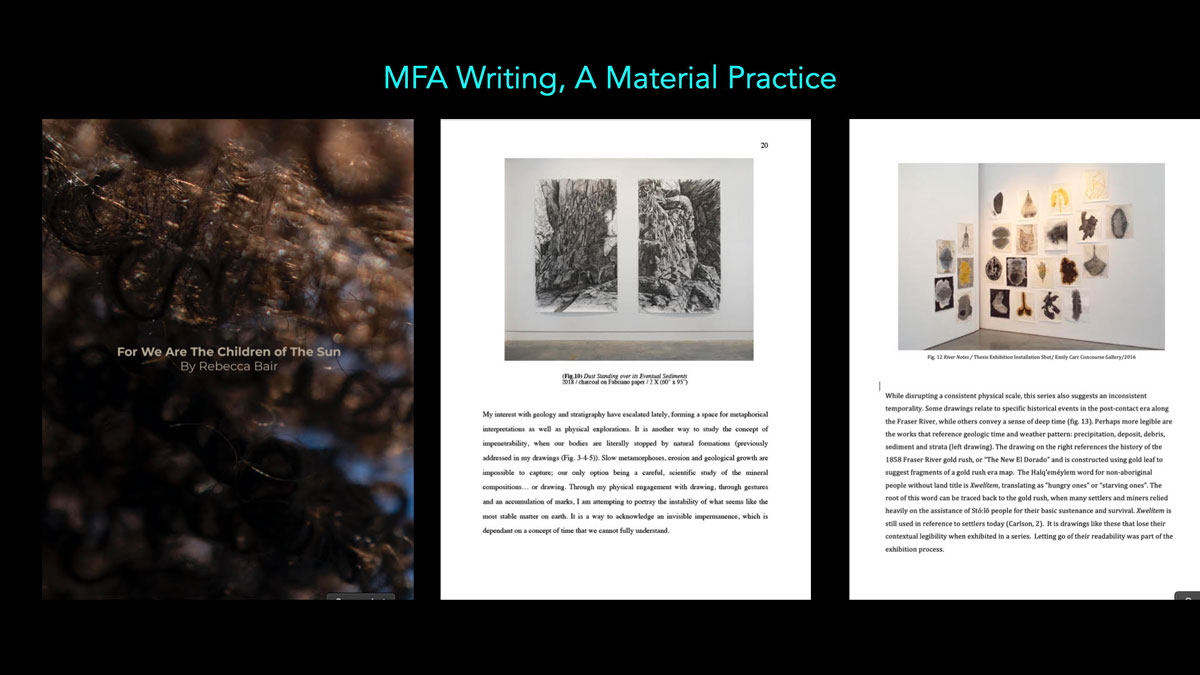G.7 Interdisciplinary Pedagogies for Writing Visual Practices
Sat Oct 17 / 11:00 – 12:30
voice_chat expiredguest chair / Brian Rusted, Independent Researcher
Whether an MFA or Honours thesis support paper, a reflective journal, or an exhibition review, writing is integral to studio art programs with learning objectives to enhance fluency in contemporary critical discourses. If a program has formal writing instruction as a requirement, it is often met by art history, or discursive applications of Gestalt or formalist readings of visual texts (see for instance, Hallie Scott 2016, or Bill Haust 1998). Books such as Graziella Tonfoni’s Writing as a Visual Art (2000), Orly Orbach’s Drawing as Performance (2019), Andrew Causey’s Drawn to See: Drawing as an Ethnographic Method (2017), or Anne Harris and Stacy Holman Jones’ Writing for Performance (2016) mix writing and practice with methods of inquiry from other disciplines. Whether studio research practices from theatre, performance, or visual art, their approaches connect and preserve the material thinking and embodied knowledge that characterizes visual practice and creative research.
Papers in this session demonstrate practice in and reflection on writing assignments in studio art classes, particularly those that adopt and adapt forms of inquiry from other disciplines.
Brian Rusted: Retired as an associate professor of Communications Media and Film, and head of the Department of Art at the University of Calgary, I taught documentary film, cultural performance, cowboy art, Canadian folklore, visual studies, and art-based research methods. My creative and scholarly research explored visual culture as a social, sensory and performative practice rather than a textual representation for interpretation and decoding. In anticipation of the Calgary Stampede's centennial, I curated The Art of the Calgary Stampede for the Nickle Galleries. In 2016, I guest edited a special issue of Cultural Studies: Critical Methodologies called Reiterating the Canadian West. I co-curated Refocus Foothills: Western Art of Southern Alberta's Cowboy Trail for the Okotoks Art Gallery in 2019, and I recently curated Bruno Canadien: Selected Works for the Little Gallery, University of Calgary.

Nurgul Rodriguez at Medalta Studios Artists in Residency Program working with a plaster lathe forming her design for her ceramic practice.
G.7.1 Placemaking: Writing in the (an)Other Language
Nurgul Rodriguez, Independent Artist
This paper’s intent is to describe an understanding of creative research in writing about my own art and artmaking process(es) with the foundational question: “How do we share spaces through writing and make places within new academic environments as non-native speakers of English while realizing the act of writing is artmaking and placemaking?” Roland Barthes states “Writing is that neutral, composite, oblique space where our subject slips away, the negative where all identity is lost, starting with the very identity of the body writing.” (The Death of Author, p.142). Thus, I will consolidate a presentation about my own experience of learning a new language and about how learning to write in a new language is a very long and laborious task for an adult learner. While learning how to become a contemporary multidisciplinary practice artist, the artist has to be able to think and write about the context, studio practices, finalizing of the work and also has to be able to mirror the analysis and synthesis of the artistic and creative experience, in other words, create a language which speaks with its own voice. Through the reading of texts, class discussions and writing, and editing exercises, artist students investigate the possibilities of writing as a researcher throughout the two-year MFA Program. This experience transforms them, and the language has the power to shape and form diasporic students as an individual. In addition, educators, who guide their students to make meaning, can interrogate the current “diversity curriculum development” for students to make sense of their place and space through writing about their art.
Where is the third/fourth place for an art work?
- 1st place: as an idea coming from the artist’s mind
- 2nd place: in the studio, processing and making place
- 3rd place: in the gallery or as an event where audience or viewer or gallery goers, museum visitors
- 4th place: in words, written and analyzed thoughts about art, with its images
Nurgul Rodriguez is an artist with an interdisciplinary practice. She works with clay, paper and other materials. Her work explores identity formation within a diasporic state of being. Nurgul settled in Calgary in 2009 after nomadic years living in Turkey, the United States and Spain with her family. She holds an MFA from the University of Calgary and BFA from Dokuz Eylu University. She recently completed one residency program at Medalta in Medicine Hat and another at AUArts in Calgary and awarded a grant by Alberta Foundation for the Arts (AFA) Visual Arts and New Media Individual Project Grant.

ECU MFA Thesis excerpts by Becky Bair, Sara-Jeanne Bourget and Genevieve Robertson
G.7.2 MFA Writing, A Material Practice
Randy Lee Cutler, Interdisciplinary Artist, Writer, Educator
The MFA thesis paper is an organic, lively and unpredictable form. At Emily Carr University, students are asked to write an exhibition support paper of 5,000 - 8,000 words as part of their MFA defense. This is generated in the second year, alongside the production of their studio work making for a challenging, confusing and ultimately enlightening experience for most students. As an opportunity for emerging artists to articulate through language something about their practice, they discover their artistic relationship with writing. While they are welcome to produce a straightforward academic paper, our students are encouraged to bring the creative explorations and research from the studio into the writing... because writing is also a material practice. The result is a spectrum of experiments depending on the student’s skill level and desires. Importantly, they are asked to locate themselves in the work and locate their work within entangled contexts; this means articulating their positionality vis a vis race, class, gender, sexuality, geography, etc., consider their relationship to materials and their ecological implications, among other thematic lenses. Writing prompts are borrowed from a range of disciplinary influences including feminist science and technology studies, the theoretical frameworks of Intersectional studies, environmental writing and so on. This paper will explore approaches, strategies and results of the interdisciplinary pedagogies involved in supporting students’ MFA writing.
Randy Lee Cutler is an interdisciplinary artist. writer and educator whose practice weaves together themes of collaboration, materiality, science and fiction. She is a co-researcher (with Ingrid Koenig) on a SSHRC Insight funded project,



